Description
Product Model: GE WES5123-2600
Product Brand: GE (WES / GE Automation line)
Product Series: WES / Field Control / Dispatch Interface
Product Features:
- Acts as a Power Dispatch / Interface / Field Controller Master module for industrial systems
- Supports standard relay base / socket functions (8-pin, LED indicator, modular relay compatibility)
- Panel mount or DIN-rail capable design; robust environmental ratings (–40 °C to +85 °C, flame-retardant housing)
- Compatible with conventional industrial voltages (rated up to 250 VAC / 30 VDC), suitable for both AC and DC control loads
Applications & Industry Use Cases
In modern industrial control and power applications, you often need a module that sits at the boundary between dispatch or supervisory systems and field-level control / relay logic. The GE WES5123-2600 is positioned in that role: a “Power Dispatch Interface” or control master that helps centralize control communication, relay actuation, and state monitoring in automation systems.
You’ll see it in electric utility substations, distribution control centers, or industrial plants where commands (e.g. open/close, trip signals, protective logic) must propagate from high-level systems to remote or local relay devices. Because GE labels it as a “Power Dispatch Interface – Intelligent dispatch,” it’s intended to optimize grid operations, reduce downtime risks, and reliably manage relay logic in critical infrastructure.
In retrofit projects where older relay sockets or interface modules are aging, installing a WES5123-2600 can upgrade diagnostic capabilities (e.g. LED indicators on relay sockets) and modernize communication paths with the dispatch system. For example, replacing simple relay bases with ones that carry diagnostics or status feedback is a common upgrade in utilities and heavy industry.
Because it supports both AC (up to 250 VAC) and DC (30 VDC) switching, and accepts standard 8-pin relay socket layouts, it is compatible with a wide range of existing mechanical relays. That flexibility helps system integrators drop it into existing panels without reengineering the entire control layout.
In environments with wide temperature swings, vibration, or interference (e.g. outdoor substations, dusty plants), the WES5123-2600’s rugged design (covering –40 °C to +85 °C) helps maintain reliable operation.
Product Role & System Integration
The WES5123-2600 acts as a relay base + interface / control module in an industrial system. In effect, it’s the mechanical socket where a relay plugs in (an 8-pin plug style), but enhanced with additional electronics and indicators (e.g. LED coil status). It also provides the wiring interface and signal consolidation to the control system.
Imagine a control panel: multiple relays are mounted in their sockets, each controlling a field device (motor starter, solenoid, breaker). The WES5123-2600 replaces a conventional socket, adding LED feedback and a more robust interface to upstream logic or dispatch modules. The upstream controller or dispatch system commands it via data lines, and the module ensures signal translation, isolation, and driving of the relay coil.
Because the module supports panel mount or optional DIN-rail adapters, it can be deployed in various mechanical layouts while maintaining consistent interface behavior.
From an integration perspective, the WES5123-2600 may tie into SCADA or dispatch systems, sending relay status, receiving commands, and providing diagnostics or health monitoring of the relay circuits. Its built-in LED indicators provide local, visual feedback, which is especially helpful during commissioning or troubleshooting.
In some designs, multiple WES5123-2600 modules may operate in parallel or in redundant configurations, ensuring that if one interface fails, another can assume control. This is common in critical infrastructure systems where failover is mandated.
Technical Features & Benefits
Let’s break down the key features of WES5123-2600 and why they matter in practice:
8-Pin Relay Base with LED Indicator
The module supports standard 8-pin relays (plug-in style). One value-added feature is the integrated LED coil indicator, which illuminates when the relay coil is energized. This visual feedback helps technicians quickly see which relays are active without extra testing gear.
- WES5123-2600
- WES5123-2600
High Electrical Ratings & Dual AC/DC Capability
It’s rated to handle up to 250 VAC / 30 VDC, making it suitable for both traditional AC control circuits and DC logic circuits. That versatility is useful if the same panel must drive mixed loads.
Robust Environmental Tolerance
The WES5123-2600 is built for harsh environments. Vendors report operational temperature range from –40 °C up to +85 °C. It uses a flame-retardant plastic housing and is mechanically robust to survive industrial stresses.
Fault Tolerance & Self-Diagnostics
According to vendor descriptions, the module includes self-diagnostic and fault-tolerant mechanisms. These functions detect wiring faults, coil failures, or interface anomalies, and either flag them or enter safe states. That helps reduce downtime and improves maintenance responsiveness.
Flexible Mounting & Mechanical Compatibility
You can mount it directly on panels or use a DIN-rail adapter, enabling flexibility in electrical cabinet layouts. The mechanical design ensures that the module fits into existing panels with minimal changes.
Compact Design & Interconnect Efficiency
While supporting robust functionality, the module aims to be compact and efficient. That helps save panel real estate and simplifies wiring paths. Some vendors emphasize its compact footprint as a differentiator.
Communication / Interface Integration
Although detailed communications protocols are not confirmed, vendor sources describe it as a “Power Dispatch Interface” — which implies that it interacts with dispatch or supervisory systems for status reporting, command reception, and possibly networked control.
A few more benefits realized in the field:
- Improved diagnostics: LED indicators make recognizing coil or relay faults quicker.
- Reduced wiring errors: Standard base plus integrated electronics reduces chance of wiring mistakes common with custom relay sockets.
- Ease of retrofit: Because it supports common relay formats, you can drop it into existing panels without major rewiring.
Technical Specifications Table (Compiled from Vendor Sources & Reasoned Inference)
Below is a table of known or reasonably inferred specifications. Use it as a reference—but confirm with GE documentation.
| Parameter | Specification / Detail |
|---|---|
| Model / Part | GE WES5123-2600 (sometimes called “Power Dispatch Interface”) |
| Function | Relay base + dispatch / control interface module |
| Relay Socket Type | 8-pin plug-in relay base (octal) |
| LED Indicator | Integrated coil-status LED per relay socket |
| Voltage Rating | Up to 250 VAC / 30 VDC switching capacity |
| Current Capacity | Up to ~10 A per contact (vendor claim) |
| Operating Temperature | –40 °C to +85 °C (industrial range) |
| Housing / Material | Flame-retardant plastic, robust for industrial settings |
| Mounting Options | Panel mount or DIN-rail adapter compatible |
| Fault / Diagnostics | Built-in self-diagnosis / fault tolerance mechanism |
| Communication / Interface | Acts as a “Power Dispatch Interface” module (status & control interface) |
| Lifecycle Status | Active in industrial module listings |
| Physical Size / Weight | Not explicitly documented in sources found |
Installation & Maintenance Advice
From practical experience with relay interface modules and the hints from vendors, here are advice and cautions:
Relay & Socket Alignment
Be sure that the relay pins align correctly with the 8-pin base. Improper seating or mechanical force can bend contacts or damage the LED indicator module.
Polarity & Wiring Checks
Double-check wiring to ensure coil drive leads, return paths, and ground references are correct. Because the module supports both AC and DC, mixing up wiring can cause failures.
Environmental Clearance / Ventilation
Even though the module is rugged, it will produce some heat, especially under full load or in dense panel conditions. Provide some airflow clearance and avoid placing heat-generating modules adjacent to it.
Diagnostic Checks
After installation, apply known control signals and verify that the LED indicators reflect coil states correctly. Use a diagnostic or test mode (if available) to confirm that fault detection logic is working.
Periodic Inspection
Over time, contacts or solder joints may loosen, especially under vibration. Periodically inspect and re-seat, check for discoloration, overheating, or corrosion.
Spare Strategy
Because this module is part of critical control, maintain at least one spare WES5123-2600 pre-wired and configured. Replacement should be straightforward during a maintenance window.
Compatibility with Relay Types
Ensure that relays used (coil voltage, contact ratings, switching capacity) are compatible with the WES5123-2600 base. Using overly large coils or inductive loads without suppression may damage the interface module.
Firmware / Interface Updates
If the WES5123-2600 supports firmware or configuration updates (as its “dispatch interface” suggests), maintain proper version control and backup of settings.

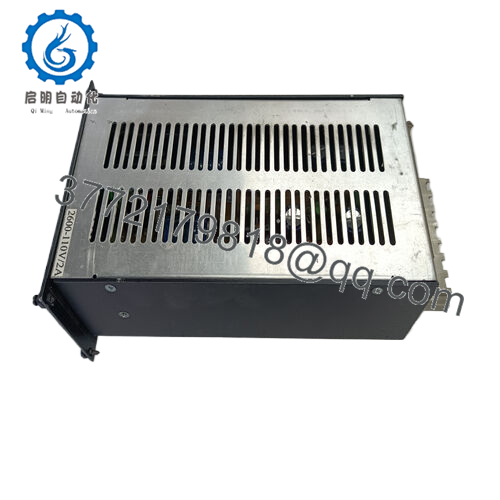
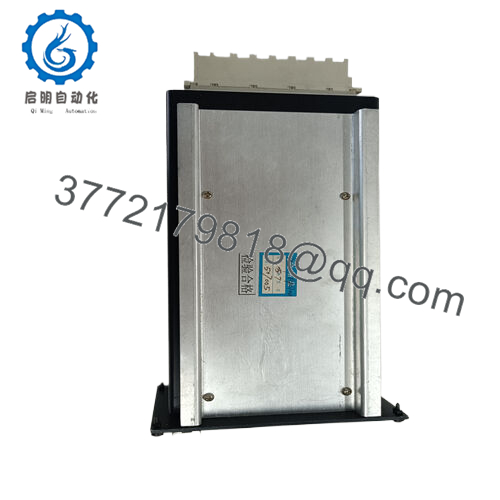
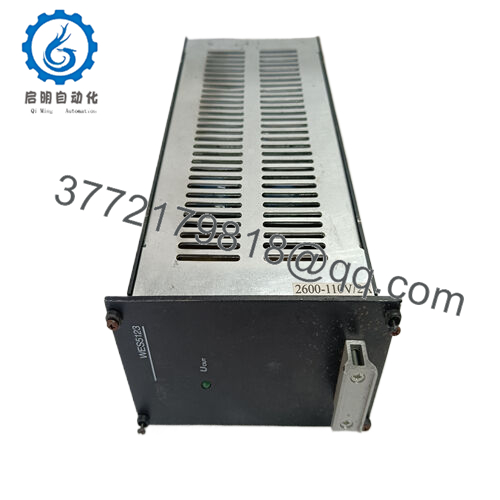
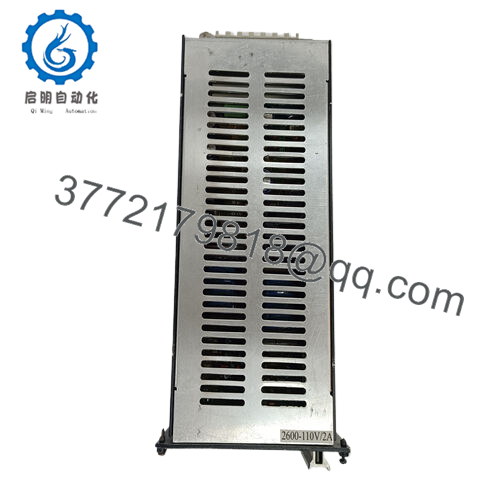
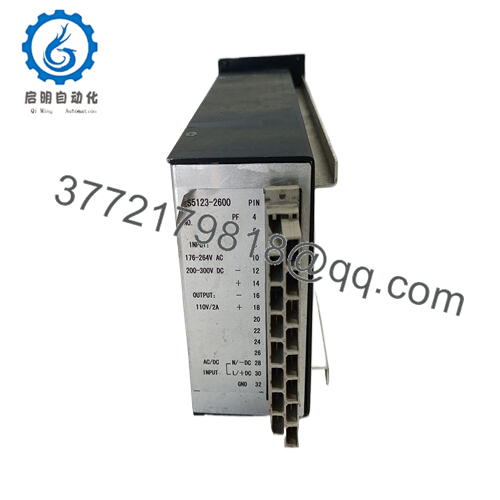
 WhatsApp: +86 16626708626
WhatsApp: +86 16626708626 Email:
Email:  Phone: +86 16626708626
Phone: +86 16626708626


